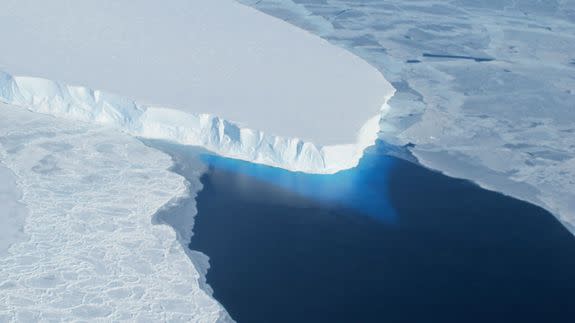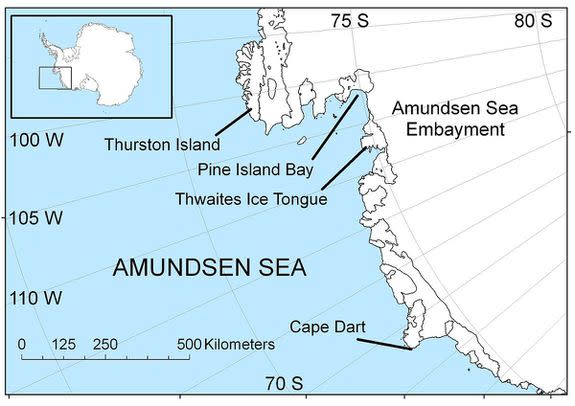Antarctica's ice walls are no match for The Wall in 'Game of Thrones'

Until a fire-spewing dragon breached The Wall in Game of Thrones, the 700-foot tall ice fortification kept murderous armies of resurrected dead from entering the Seven Kingdoms.
Unfortunately, ice walls on Earth aren't this robust.
Glaciologist Martin Truffer of the University of Alaska Fairbanks recently revealed this reality at the American Geophysical Union's annual meeting in New Orleans. Earth's Antarctic ice walls are far more vulnerable to collapse, and as new, unsettling research suggests, scientists may have underestimated the momentous impact this could have on sea level rise this century.
SEE ALSO: Recent Arctic warming and ice melt are 'unprecedented' in human history
The fictitious Wall in Game of Thrones doesn't just stand 700 feet tall — it stretches for 300 miles. But if it were here on Earth, it would crumble.
"Essentially the ice deforms under its own weight," Truffer said in an interview. "Once you start piling it that high it will literally ooze out like honey at the bottom."
Ice walls in Antarctica don't get above around 100 meters, or about 330 feet, Truffer explained. It's just simple physics. "Once they get that high the stresses are so high that the ice just cracks and fails," he said.

Image: NASA
The physical realities of Earth also don't bode well for the gated tunnel at the bottom of The Wall, designed to let brazen (and often foolhardy) warriors into the dangerous regions beyond The Realm.
"That definitely wouldn’t work under 200 meters [or 656 feet] of ice," said Truffer. "It would squeeze shut in hours. You could watch it happen."
The realities of ice walls on Earth — even if they are half the height of those in The Realm — have important implications for anyone living near the coast. Massive amounts of water are stored in the West Antarctic Ice Sheet, and if the precipitous ice walls here begin to shed large amounts of ice, this could rapidly amplify sea level rise — possibly by more than four feet this century.
"It’s the area with the greatest potential for sea level to impact the world," said Truffer. "If rapid sea level rise happens this century it's happening out of there."
The specific area Truffer refers to is the Amundsen Sea sector of West Antarctica, home to the Thwaites and Pine Island Glaciers. At the end of these massive ice sheets, as depicted above, are imposing sea walls.
And as global temperatures climb, these ice sheets can be thawed from both above and below.

Image: wikimedia
Truffer says much of the melting of West Antarctic ice shelves has to do with relatively warmer water seeping into the West Antarctic region, which melt and weaken the ice from below. "It can do a lot of damage to the ice there," he said.
Atop the ice sheets, scientists have observed warmer air forming ponds on the surface, which then flow deep into the ice and cause substantial cracking.
And once these ice sheets begin collapsing, there's potential for a runaway effect. After the ice sheers off, the sharp vertical walls left behind have little support. They too collapse, and the cycle continues, moving further inland, and freeing up more land-based ice to slide into the sea.
"The question is just how quickly is this going to go," said Truffer.
"Will there be three feet of sea level rise this century?" he asks. "The rates that are possible can vary by an order magnitude. That’s where a lot of these unknowns are."
Unlike the millions of coastal dwellers here on Earth, the human denizens of the fictitious Seven Kingdoms aren't the least bit concerned about sea level rise. They have other concerns; specifically, a nefarious legion of the dead that wants to annihilate them.
But as the season 7 finale proved, even if their ice wall can stand strong and rigid at 700 feet high, it's no match for a zombie-dragon endowed with blue fire.
"Maybe Game of Thrones needs to build a big moat," said Truffer.
WATCH: A floating 'island of trash' has surfaced in the Caribbean


